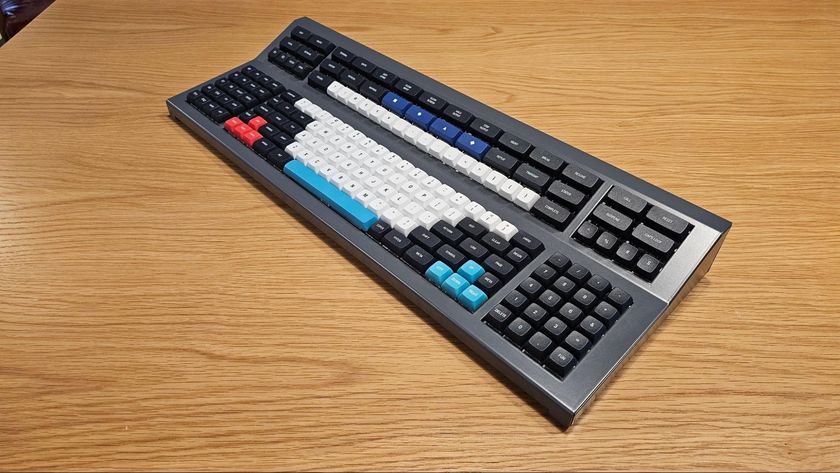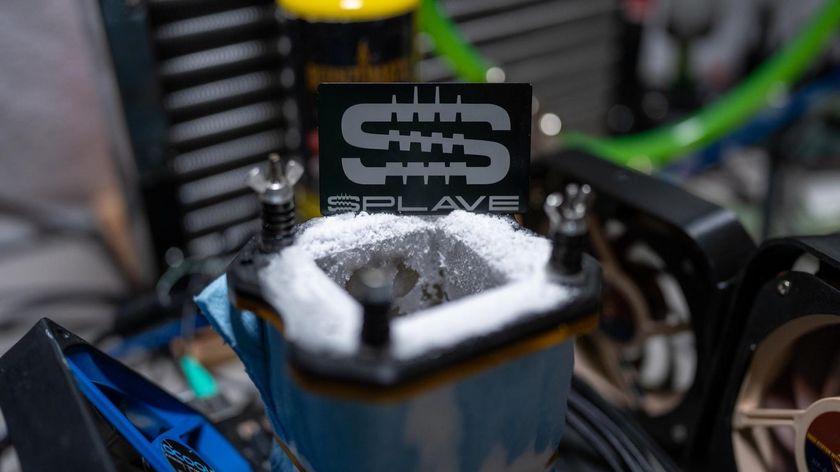Intel Rigs Up: P4 Series with FSB800
Conclusion: Affordable CPU Upgrade - Hyperthreading For The Common Man, MSI With Dynamic Overclocking
Intel is offering its slower 2.4 GHz, 2.6 GHz, and 2.8 GHz processors with the option of a 200 MHz front side bus (FSB 800). On top of that, these CPUs now have their Hyperthreading (virtual multiprocessing) circuitry activated. In our experience the 2.8 GHz P4 is the best choice: it costs less than $300 and offers excellent overclocking potential. Without any special cooling we achieved 3.22 GHz (14 x 230 MHz) in our tests, surpassing the performance of the latest Northwood P4 (due to appear shortly, at the not inconsiderable cost of $637 for 3.2 GHz).
The introduction of the higher FSB speed and the activation of Hyperthreading has shifted the goalposts in the contest for the world's fastest processor. The AMD Athlon XP has lost further ground; its current flagship model, the XP 3200+, can only manage a performance somewhere in between those of the 2.6 GHz and 2.8 GHz Pentium 4. This brings the small matter of model numbering into question once again.
Our comparative test of various boards using the 865PE and 875P chipsets shows that, despite Intel's much touted PAT technology, the Canterwood chipset does not reach the top of the heap in performance tests. The actual $16 price difference between the two chipsets adds up to $40, plus the price of a motherboard. Consumers should therefore choose the cheaper 865PE board - ECC memory detection is hardly a convincing sales feature.
Our lab engineers made a curious discovery when they were examining the new 865PE board from MSI. By incorporating special logic circuitry, the manufacturer has succeeded in boosting the speed of the CPU through dynamic overclocking in such a way that it is not detectable with conventional benchmarking utilities like WCPUID, Intel Frequency Display, CPUZ, or SiSoft Sandra 2003. However, FSB and CPU speeds are only increased when applications are started or when benchmark programs have finished - subject to CPU usage reaching close to 100 percent. What sparked off our investigation was the observation that the 865 Neo 2 board from MSI was producing record scores in programs such as 3D Mark 2001 and 2003, despite the fact that the board's memory performance was lower than that of the rest of the field.
The only way to achieve this is through special logic circuitry for overclocking the 3 GHz processor to beyond 3.2 GHz. Each time a benchmark was finished, the FSB switched immediately back to 200 MHz and the CPU continued running at 3 GHz. Smart work! We would never have gotten to the bottom of this ingenious trickery had it not been for our development software.
Stay On the Cutting Edge: Get the Tom's Hardware Newsletter
Get Tom's Hardware's best news and in-depth reviews, straight to your inbox.
Current page: Conclusion: Affordable CPU Upgrade - Hyperthreading For The Common Man, MSI With Dynamic Overclocking
Prev Page Office Application: PC Mark 2002











